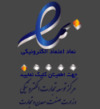gh. bazmandegan
-
مقدمه
شناسایی علل دخیل در تغذیه برخی شیرخواران با شیر خشک، نقش مهمی در برنامهریزی برای ترویج تغذیه با شیر مادر دارد. هدف مطالعه حاضر تعیین علل مصرف شیر خشک در شیرخواران شهر رفسنجان در سال 1395 بود.
مواد و روشها:
پژوهش توصیفی حاضر بر 372 مادر مراجعهکننده به مراکز بهداشتی درمانی شهر رفسنجان، با فرزندان زیر یک سال که شیر خشک مصرف میکردند انجام شد. از نمونهگیری در دسترس و پرسشنامه محقق ساخته برای جمع آوری اطلاعات استفاده شد. داده ها بر اساس فراوانی، درصد، میانگین و انحراف معیار توصیف شدند.
یافته هامیانگین سن مادران 87/4 ± 61/23 سال و میانگین سن شروع شیر خشک 46/39 ± 71/40 روز بود. مادران با تعداد 208 نفر (9/55 درصد)، بیشترین فراوانی مربوط به عامل شروع کننده مصرف شیر خشک را داشتند. شایع ترین علل این موضوع، تصور ناکافی بودن شیر مادر با 206 نفر (4/55 درصد) و خوب وزن نگرفتن نوزاد با 107 نفر (8/28 درصد) بود.
نتیجهگیری:
نتایج نشان داد مادران نقش مهمی در تغذیه شیرخوار با شیرخشک دارند. شاید به برنامه های آموزشی تقویت کننده باورهای مادران جهت تداوم شیردهی نیاز باشد.
کلید واژگان: شیر مادر, شیرخوار, شیر خشک, رفسنجانIntroductionThis study was conducted to determine the factors related to infant formula milk consumption in Rafsanjan in 2016.
Materials and MethodsThis study was a descriptive study conducted on 372 mothers referred to Rafsanjan health centers with children under one-year-old consuming formula milk. Frequency and percentage were used to describe qualitative data, while mean and standard deviation were used for quantitative variables.
ResultsThe mean age of mothers was 23.61 ± 4.87 years. The mean age of the formula onset was 40.71 ± 39.46 days. 208 mothers (55.9%) had the highest frequency as the initiator of formula milk consumption. The most common causes related to this issue were maternal perceptions of insufficient milk with 206 individuals (55.4%) and poor infant weight gain with 107 individuals (28.8%), respectively.
ConclusionsThe results showed that mothers have a key role in formula milk consumption. Educational programs that strengthen mothers' beliefs may be needed to continue breastfeeding.
Keywords: Breast Milk, Infant, Formula milk, Rafsanjan -
زمینه و هدف
سردرد وضعیتی بعد زایمان عارضه بی حسی نخاعی بوده و موجب افزایش هزینه بستری و محدودیت مادر می گردد. در این تحقیق نقش مایع درمانی وریدی قبل از شروع بی حسی نخاعی بر میزان بروز، شدت و مدت سردرد وضعیتی بررسی شده است.
مواد و روش ها:
در این مطالعه کارآزمایی بالینی، جامعه آماری شامل دو گروه 75 نفری زن کاندید سزارین الکتیو در شهر رفسنجان در سال 1397 بود. قبل زایمان 500 میلی لیتر سرم رینگر به گروه مداخله تزریق و گروه کنترل سرمی دریافت نکردند. دو گروه از جهت سردرد وضعیتی در 7 روز بعد زایمان با آزمون هایt دو نمونه مستقل و مجذور کای تجزیه و تحلیل شدند.
یافته ها:
نتایج نشان داد مایع درمانی وریدی قبل از عمل در زنان کاندید سزارین الکتیو می تواند میزان بروز سردرد وضعیتی را در شرایط یک سان تکنیکی به طور چشم گیر کاهش دهد (دو نفر معادل 7/2 درصد گروه مداخله در برابر 16 نفر معادل 16 درصد گروه کنترل با 005/0=P). هرچند مقایسه سایر شاخص ها در دو گروه تفاوت آماری معنی داری نشان نداد (05/0<P) ولی در برخی از شاخص ها مانند شدت سردرد، فراوانی نیاز به استامینوفن و تعداد موارد مصرف آن، در گروه مداخله کم تر از گروه کنترل بود.
نتیجه گیری:
نتایج نشان داد که تزریق سرم وریدی قبل بی حسی نخاعی در سزارین با ناشتایی حداقل هشت ساعت می تواند میزان بروز سردرد وضعیتی بعد بی حسی را در روزهای بعد به میزان چشم گیر کاهش دهد. لذا این اقدام ساده و دردسترس می تواند مفید باشد.
کلید واژگان: سزارین الکتیو, سردرد وضعیتی, پارگی دورا, بروز, بی حسی نخاعی, مایع درمانیBackground and ObjectivesPostdural puncture headache is a complication of spinal block in postpartum period, which increases the cost of hospitalization and limits maternal activity. The purpose of this study was to evaluate the role of intravenous fluid therapy before the onset of spinal block in the incidence, severity and duration of postdural puncture headache.
Materials and MethodsThe present study was a clinical trial. The statistical population consisted of two groups of 75 women candidates for elective cesarean section in Rafsanjan in 2018. In the pre-partum room, 500 CC ringer serum was infused into the intervention group and the control group did not receive any serum. The two groups were compared for post dura puncture headache during 7 days via independent two-sample t-test and chi-square test.
ResultsThe results showed that intravenous fluid therapy before entering the operating room in women undergoing elective cesarean section can significantly reduce the incidence of postdural headache in the same technical conditions ( 2 persons equal 2.7% of intervention group versus 12 persons equal 16% of control group) (p=0.005). Although, there were no significant differences between the two groups in some indices (p>0.05), indices such as headache severity, frequency of acetaminophen need and number of its use in the intervention group were less than the control group.
ConclusionThe results showed that intravenous serum therapy prior to spinal anesthesia in cesarean section for at least eight hours fasting could significantly reduce the incidence of postdural headache in subsequent days. So, this simple and accessible action can be helpful.
Keywords: Elective cesarean section, Postdural headache, Dura puncture, Incidence, Spinal block, Fluid therapy -
Background and objectives
Most antiepileptic drugs that are commonly being used in the clinic have a wide range of unwanted side effects; while some species of pistachioshave been used in the traditional medicine to treat epilepsy. The aim of the present study was to investigate the anticonvulsant effects of the hydroalcoholic extract of Pistacia vera L. in pentylenetetrazole (PTZ)-induced chemical kindling.
Methodsthis study was carried out on 40 male Wistar rats. Chemical kindling was induced by intraperitoneal administration of PTZ (40 mg/kg) on every alternate day (30 days). The hydroalcoholic extract of P. vera (50 and 100 mg/kg) were administered orally every day (30 days). In days which animals received both PTZ and extract, PTZ was injected 30 min after extract administration. Convulsive behavior was observed for 30 min after PTZ injection and scored according to racine scale. Diazepam was used as the reference anticonvulsant drug.
ResultsPretreatment with 50 and 100 mg/kg of P. vera extract decreased seizure scores, stage 4 latency and stage 5 duration compared to the control group. The anti-epileptic effects of P. vera extract were comparable to diazepam.
ConclusionThe present findings demonstrated that the hydroalcoholic extract of P. vera may inhibit the development of seizure behavior following chronic PTZ-induced model of epilepsy in rats.
Keywords: Pentylenetetrazole, Pistacia vera, Rat, Seizure
- در این صفحه نام مورد نظر در اسامی نویسندگان مقالات جستجو میشود. ممکن است نتایج شامل مطالب نویسندگان هم نام و حتی در رشتههای مختلف باشد.
- همه مقالات ترجمه فارسی یا انگلیسی ندارند پس ممکن است مقالاتی باشند که نام نویسنده مورد نظر شما به صورت معادل فارسی یا انگلیسی آن درج شده باشد. در صفحه جستجوی پیشرفته میتوانید همزمان نام فارسی و انگلیسی نویسنده را درج نمایید.
- در صورتی که میخواهید جستجو را با شرایط متفاوت تکرار کنید به صفحه جستجوی پیشرفته مطالب نشریات مراجعه کنید.

